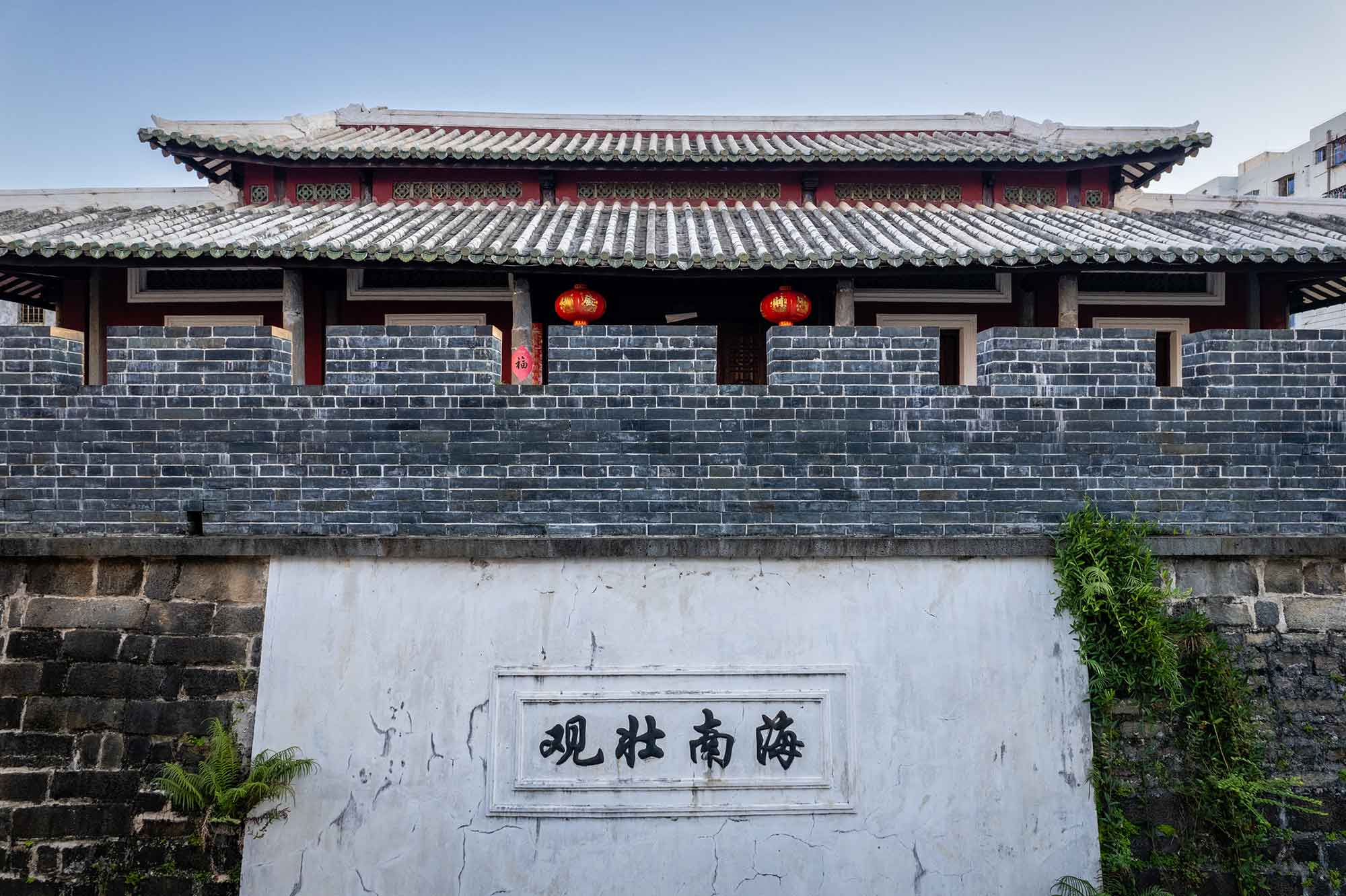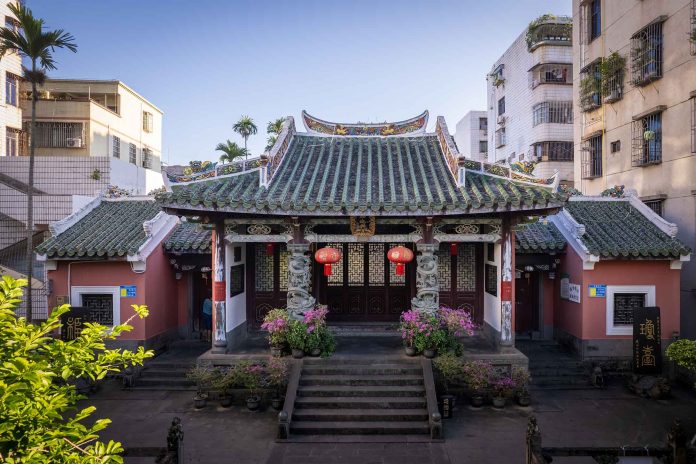The oldest part of Haikou City, which was the first to undergo development, is Fucheng (府城). This area began its urban development during the Song (960-1279) and Yuan (1271-1368) dynasties.
Fucheng was chosen as the site for early development due to several strategic and geographical advantages:
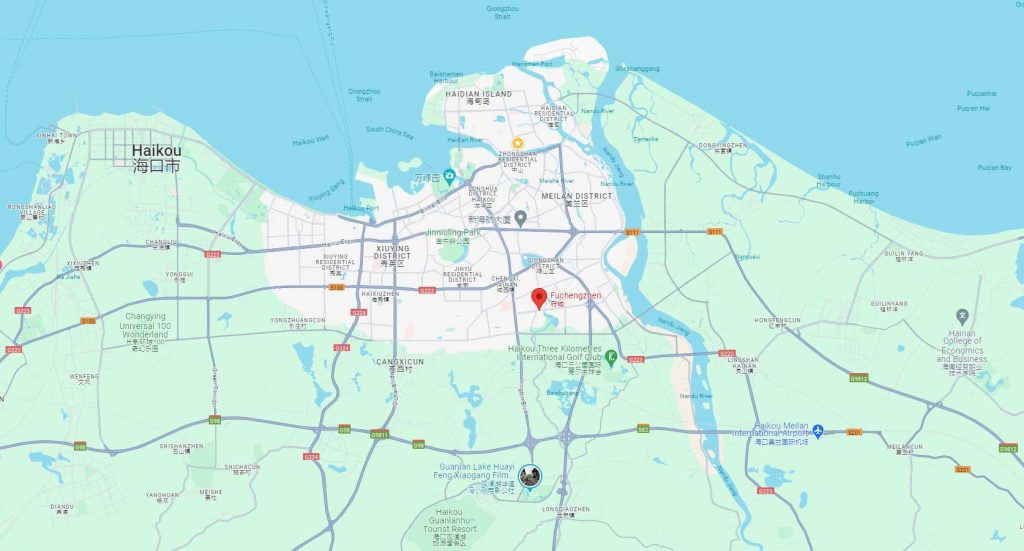
Strategic Location: Fucheng is located in a region that provided easy access to both the sea and inland areas. This made it an ideal spot for trade, transportation, and military defence. Its proximity to the Nandu River allowed for efficient transportation of goods and people.
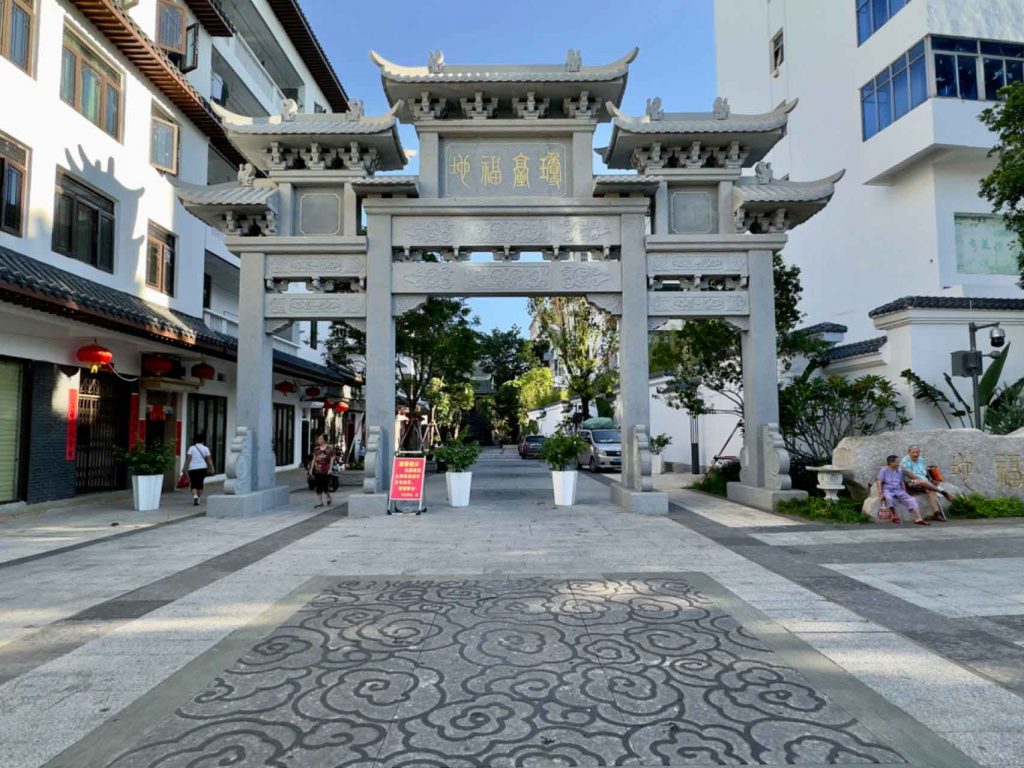
Administrative Importance: During the Song and Yuan dynasties, Fucheng was established as an administrative centre. Its development was driven by its role in governance and administration, making it a focal point for political and economic activities.
Natural Resources: The area around Fucheng was rich in natural resources, including fertile land for agriculture. This supported a stable food supply and contributed to the economic prosperity of the region.
Cultural and Historical Significance: Fucheng’s historical and cultural significance grew over time as it became home to many notable scholars, officials, and historical figures. This cultural heritage added to the region’s prominence and appeal.
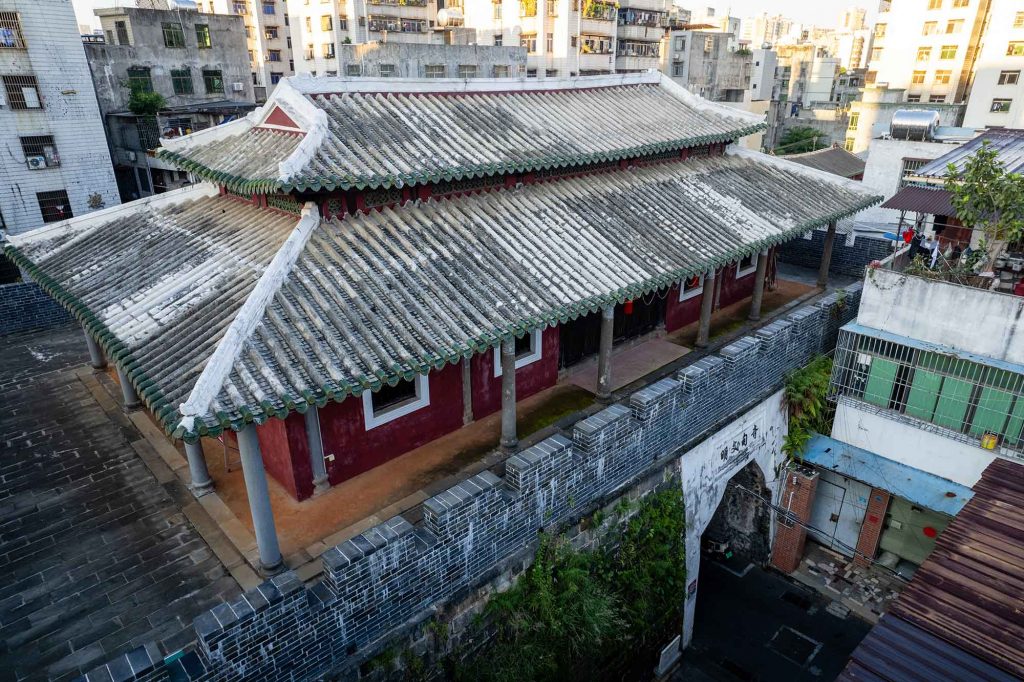
Defensive Benefits: The location’s natural terrain provided defensive advantages. The higher ground in the north and the construction of city walls and gates enhanced its security against potential invaders.
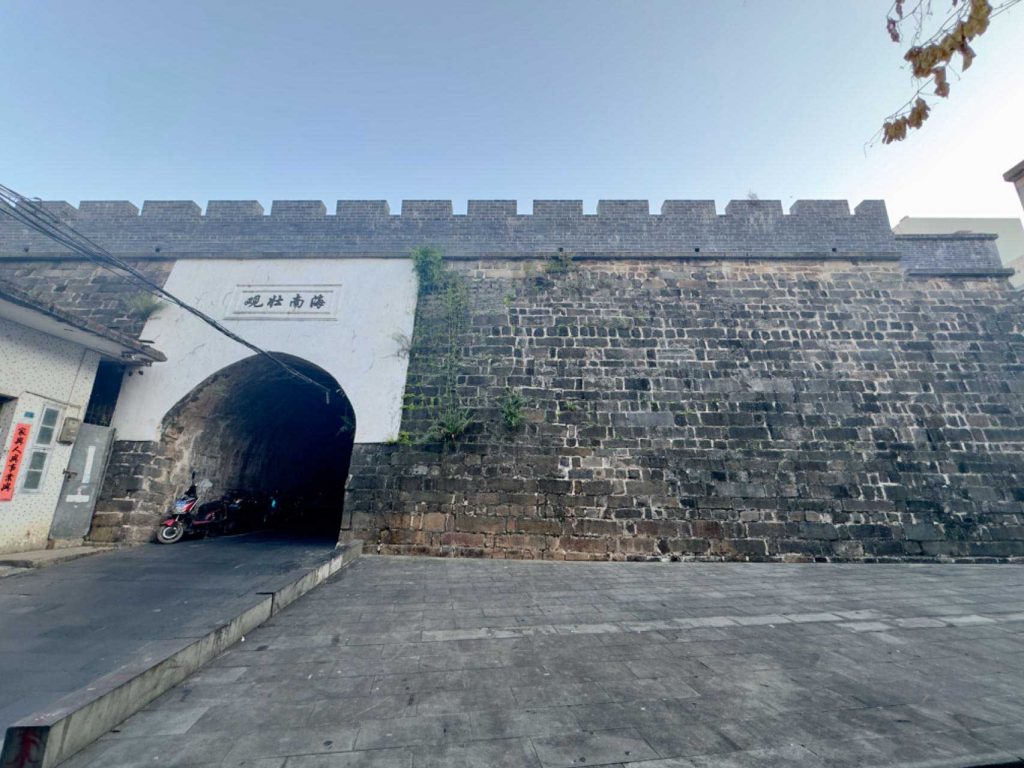
These factors combined to make Fucheng the ideal location for early urban development, laying the foundation for what would eventually become Haikou City.
By the Ming (1368 to 1644) and Qing (1644 to 1912) dynasties, the city had undergone numerous expansions, establishing three main gates in the east, south, and west, and constructed an additional earthen wall to the west.
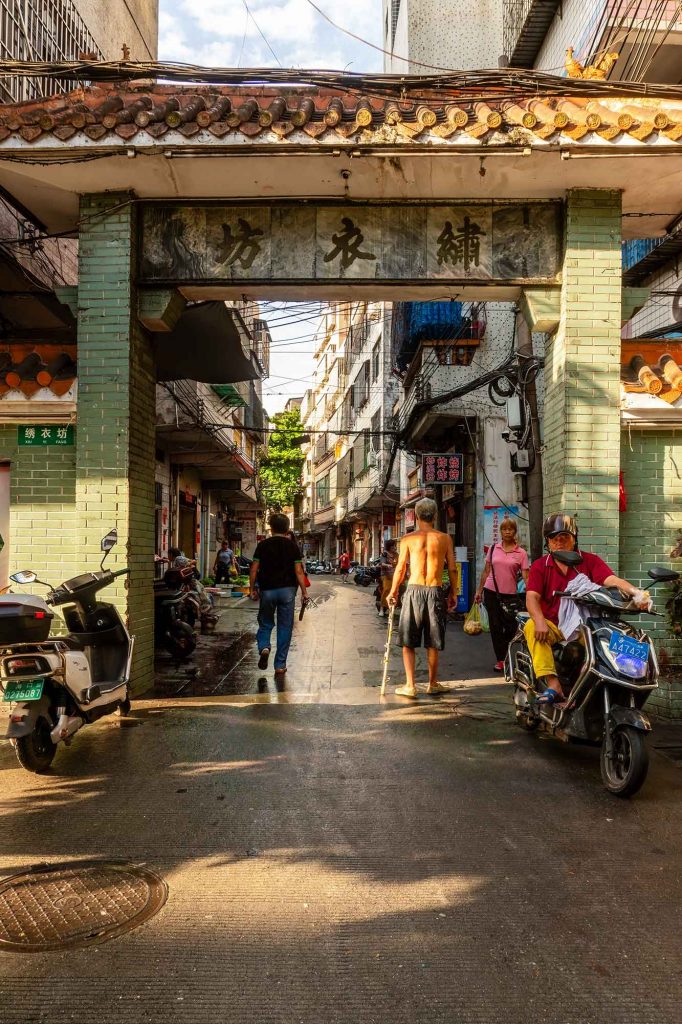
Streets and lanes, primarily oriented east-west along WenZhuang and ZhongJie roads, with other lanes branching off in the south, gradually forming a network known as 七井八巷十三街 “Seven Wells, Eight Lanes and Thirteen Streets.”
The Legacy of Fucheng’s Streets and Alleys
While the grandeur of Fucheng’s ancient cityscape is hard to imagine today, its streets and lanes still whisper tales of the past. Many of these lanes and alleyways gained fame from the notable figures who lived there.
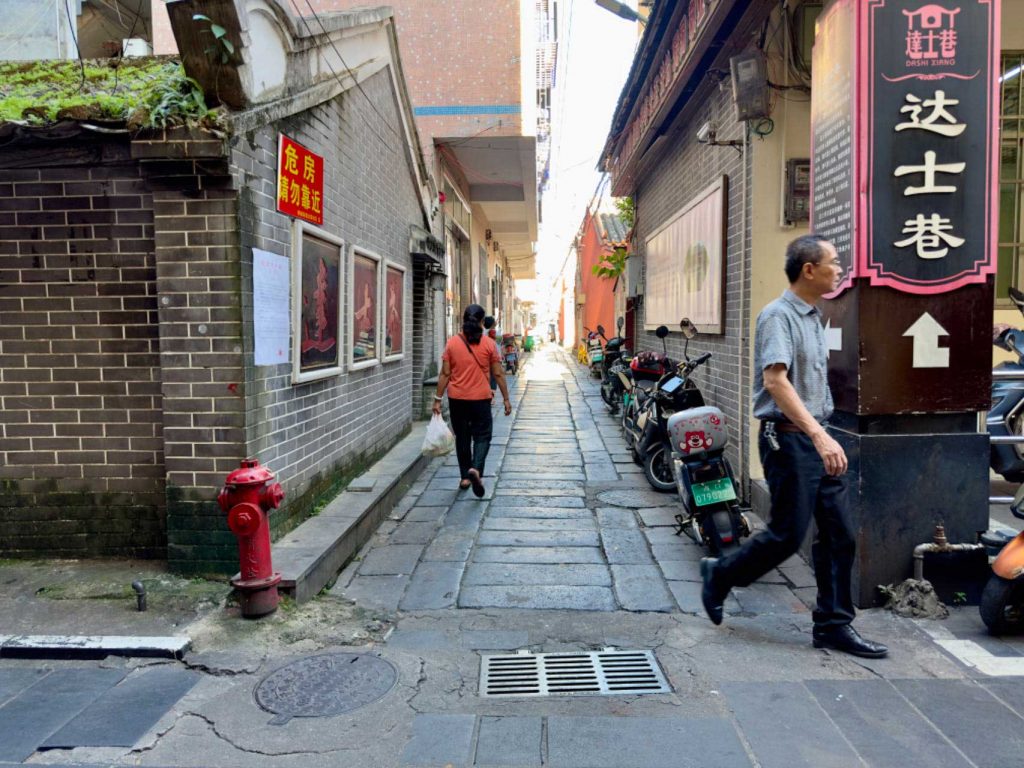
For instance, Dashi Lane, which was originally known as ‘Zheng Family Alley,’ was renamed to reflect its status as the home of many prominent figures, including Ming dynasty official Zheng Tinghu and the renowned scholar Zhong Fang.
The term “Seven Wells” refers either to ancient wells dug for water or to the prosperous market areas that formed the city’s core.

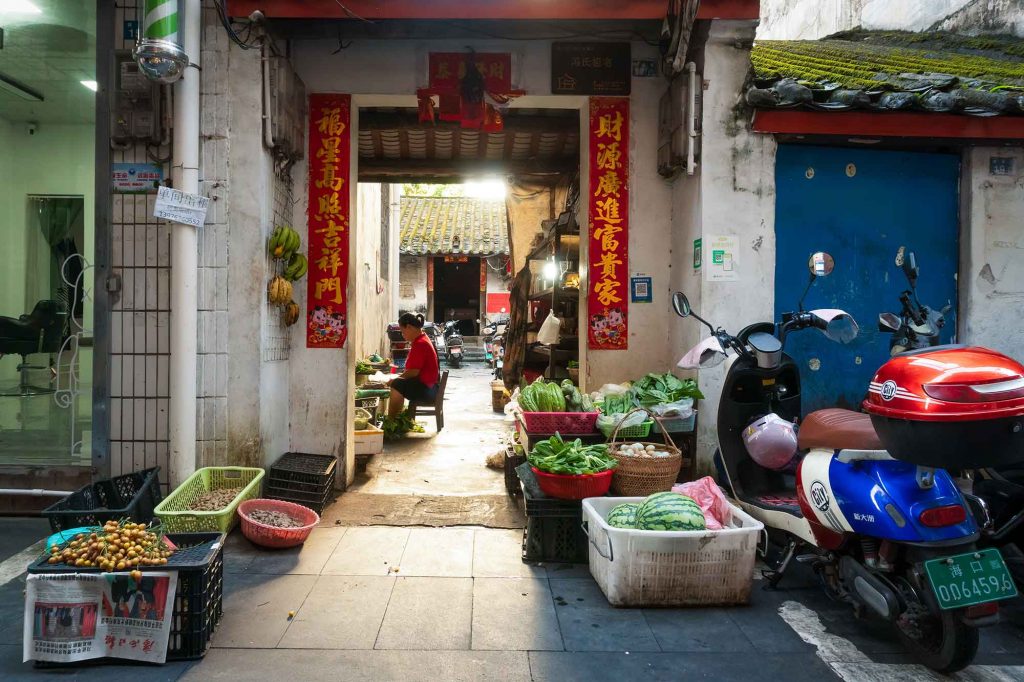
Each of the eight lanes has unique characteristics: the shortest and narrowest is Egg Alley 蛋巷” (Dàn Xiàng), the steepest is Blacksmith (ironworkers) Lane 打铁巷 (Dǎ Tiě Xiàng), the most winding is Renhe lane 仁和巷 (Rén Hé Xiàng), and the most serene is Guandi Lane 关帝巷 (Guān Dì Xiàng).
Some alleys have more colorful names and histories, like “Smelly Alley” (臭屎巷 – Chòushǐ Xiàng). The alley was originally called 夏宅巷 (Xiàzhái Xiàng – Xiazhai Lane), meaning “Summer Residence Lane.”
It was renamed 少史巷 (Shǎoshǐ Xiàng) after a prominent family with an ancestor who held the government title of 少史 (Shàoshǐ) moved in. The pronunciation of 少史 (Shàoshǐ) in the local Hainan dialect is similar to a vulgar term for “feces,” leading locals to humorously call it 臭屎巷 (Chòushǐ Xiàng). This name reflects the local wit and linguistic influence on place names, rather than an actual bad smell.
Thirteen Historic Streets
The Thirteen Streets include Dongmen Street, Fuqian Street, Nanmen Street, Jingnan Street, Shangshu Street, Beidi Street, Zhentaiqian Street, Xianqian Street, Xianhou Street, Dingzi Street, Xueqian Street, Ma’an Street, and Beimen Street.
These streets, though varying in width and character, have retained their historical names through generations.
Preserving the Past
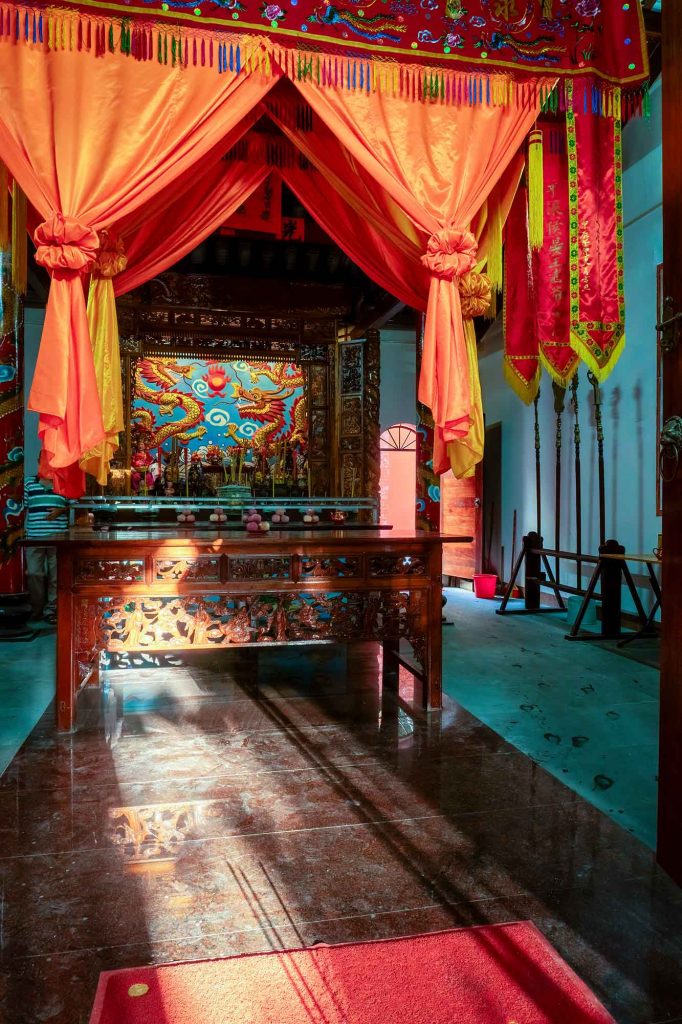
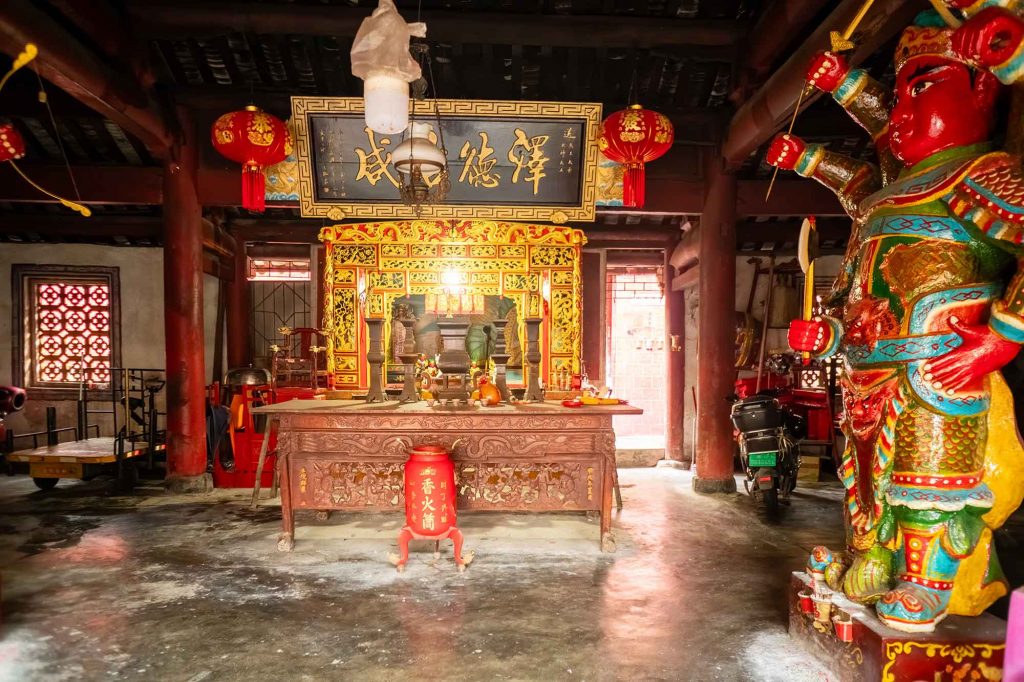
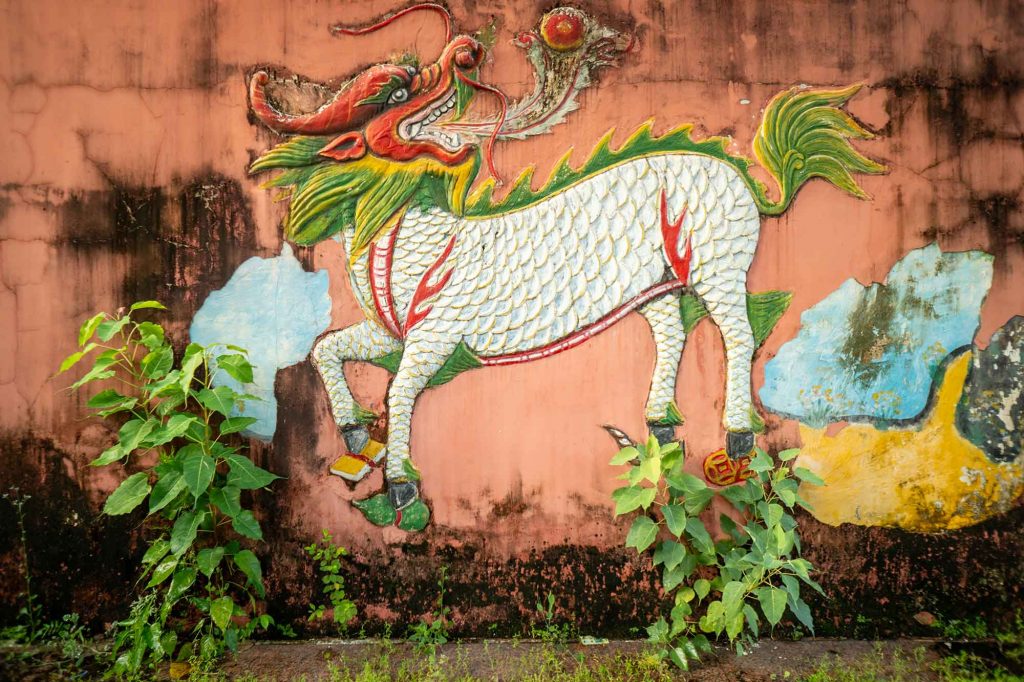
The layout of “Seven Wells, Eight Alleys and Thirteen Streets” captures the essence of Fucheng’s historical environment, preserving ancient buildings and authentic historical details. Walking through these old streets, one can still find Buddhist and Taoist temples, shrines honouring historical figures, and numerous other relics of the past.
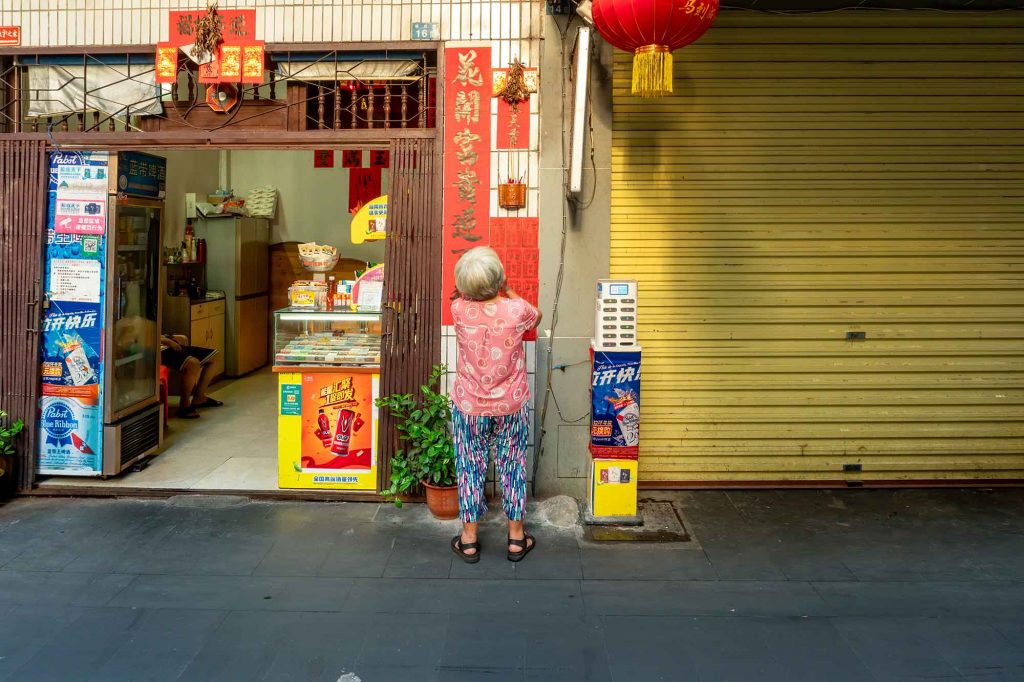
Although the ancient city walls are long gone, the deep historical roots of this thousand-year-old city silently permeate the lives of Fucheng’s residents. The street names and the stories behind them continue to remind visitors of the city’s illustrious history.
Fucheng’s “Seven Wells, Eight Alleys and Thirteen Streets” stand as testament to the city’s vibrant past, each corner offering a glimpse into the lives and stories that shaped this historic locale.
Exploring these streets is like stepping back in time, where every name and every stone carries the heritage of a bygone era.
Related article: Discover more from historical Haikou
